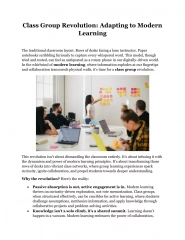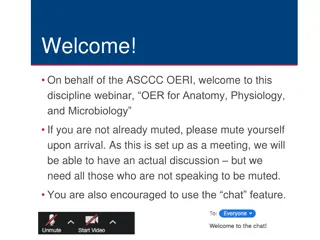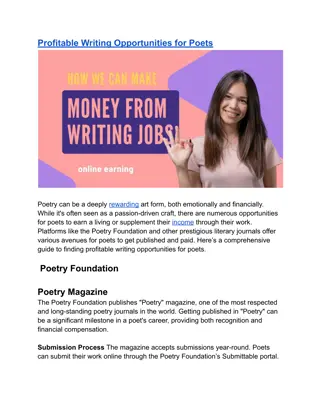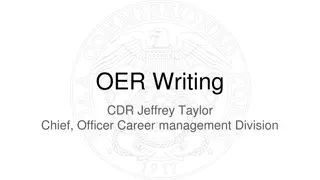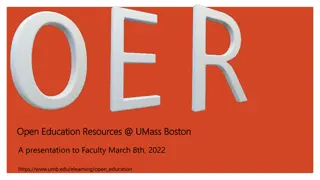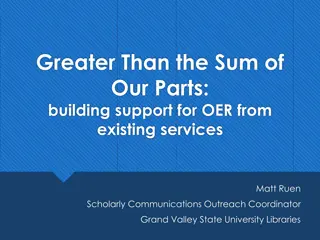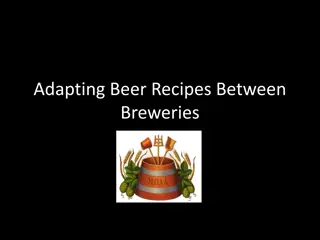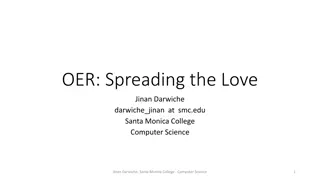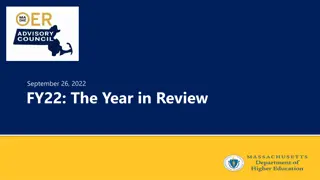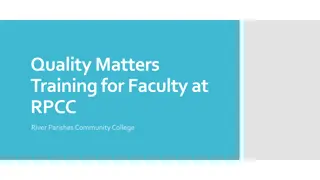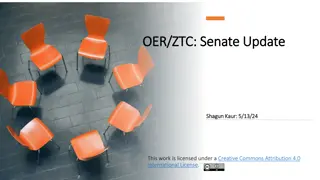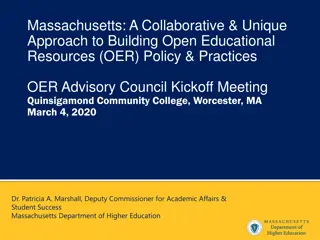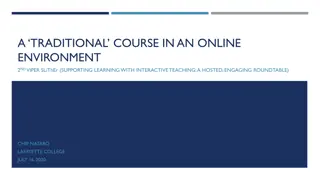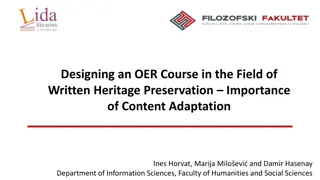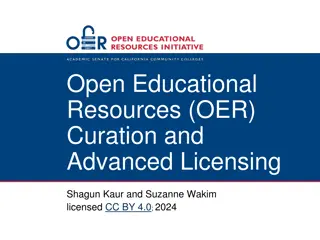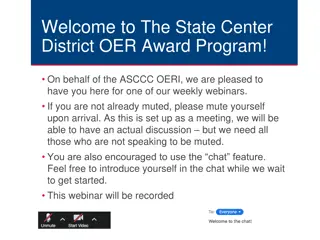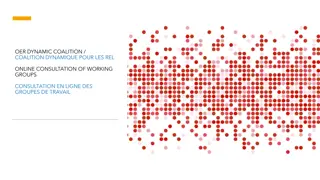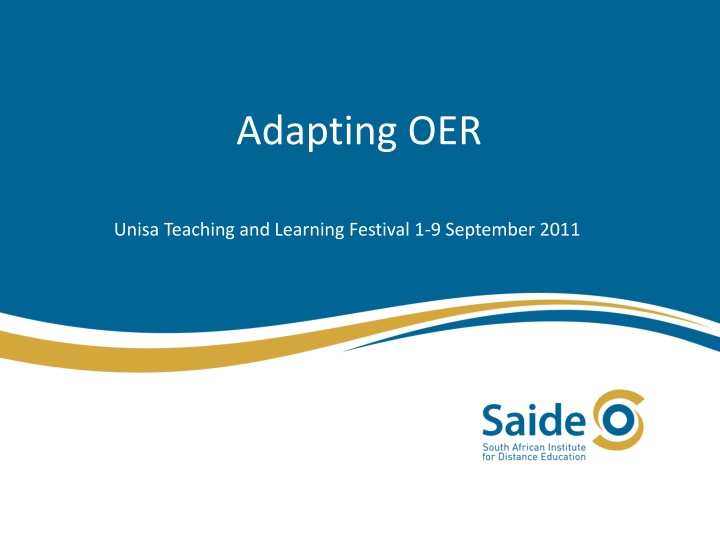
Unlocking the Potential of Open Educational Resources (OER) Through Adaptation and Use
Discover the importance of adapting and utilizing Open Educational Resources (OER) for effective teaching and learning. Learn about the OER life cycle, mapping OER into your curriculum, options for re-use, and research insights on adaptation strategies. Explore the concept of localized adaptation and consider the value of adjusting pedagogy for enhanced educational impact.
Download Presentation

Please find below an Image/Link to download the presentation.
The content on the website is provided AS IS for your information and personal use only. It may not be sold, licensed, or shared on other websites without obtaining consent from the author. If you encounter any issues during the download, it is possible that the publisher has removed the file from their server.
You are allowed to download the files provided on this website for personal or commercial use, subject to the condition that they are used lawfully. All files are the property of their respective owners.
The content on the website is provided AS IS for your information and personal use only. It may not be sold, licensed, or shared on other websites without obtaining consent from the author.
E N D
Presentation Transcript
Adapting OER Unisa Teaching and Learning Festival 1-9 September 2011
Some words of wisdom from others To unlock the potential of OERs, they have to be first located, then adapted, used and the adaptations (perhaps with commentary on the form and impact of their use) made available to a wider community; otherwise they remain just another piece of content , merely stuff rather than a tool (Cantoni, quoted in Conole & Weller, 2008, p.11).
OER Life Cycle Find Share Adapt Refine Produce Use
Mapping the OER onto your curriculum Analyse own curriculum Aims and learning outcomes Units/content Where could the OER(s) fit? For example OER OER OER
Options for re-use Simple ReUse (Use OER as per original) Rework (Rework OER) Remix (Mix different OER)
Saide ACEMaths project research into take-up Existing distance material (UNISA module) with some adaptation Reuse (Site B): Single unit as a whole, un-adapted, used as reference material. Reuse (Site A and C): Single unit as a whole, un-adapted, used as course material. Reuse (Site D, E and F): Full set of units, un-adapted, used as course material. Remix (Site C): Combination of unit(s) (un-adapted) with other material, used as course material. Remix (Site A): Combination of unit(s) (adapted) with other material, used as course material. Rework (Site D, and also UNISA): Full set of units, adapted, used as course material.
How much adaptation will be necessary? Level particularly of language Localisation ? ? The 15% rule
TESSA research typology of adaptation/reversioning Names Culture and environment Curriculum Change of name of person or place to one that is locally relevant Replacement of traditional stories or historical events with culturally relevant examples Changes to more fully align the OER with the local Curriculum Most frequent form of adaptation Quite frequent Not very frequent Q. If you have to adjust the pedagogy as well, is it worth adapting?
Adapting an OER Open the zipped folder on the CD ROM containing the Open Learn unit, Introduction to Accelerated Learning. Work in pairs to 1. review the unit, and 2. discuss how it could be adapted for a South African audience.

